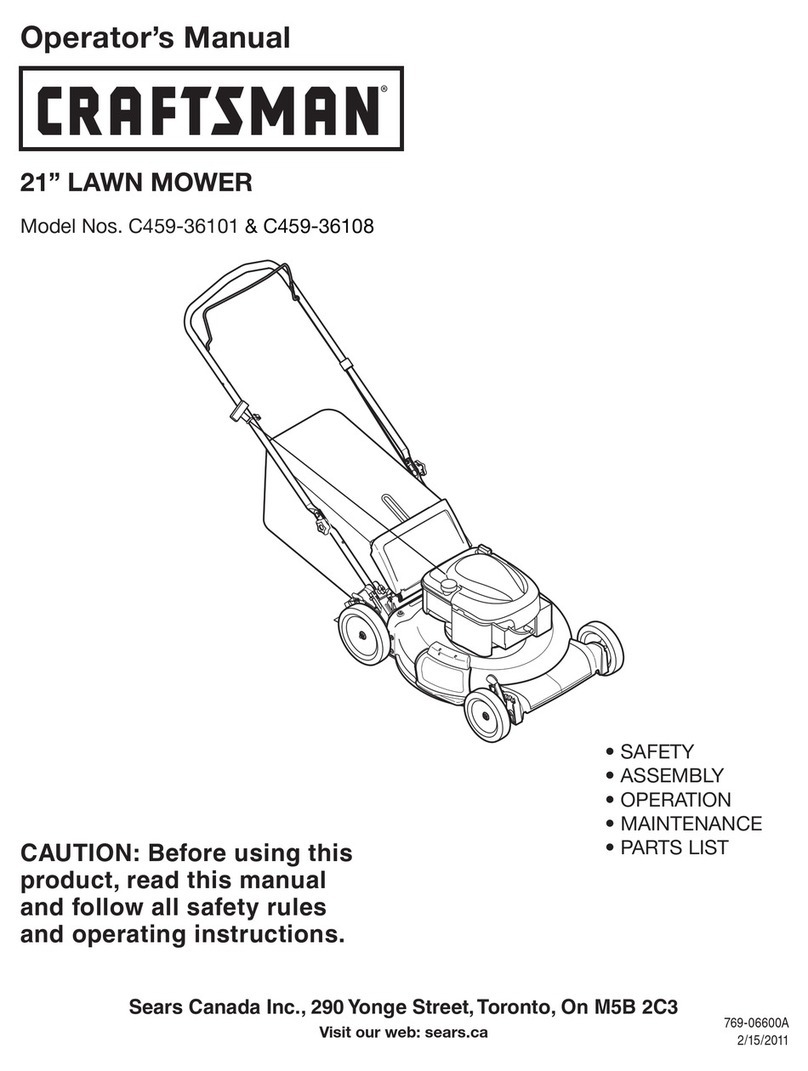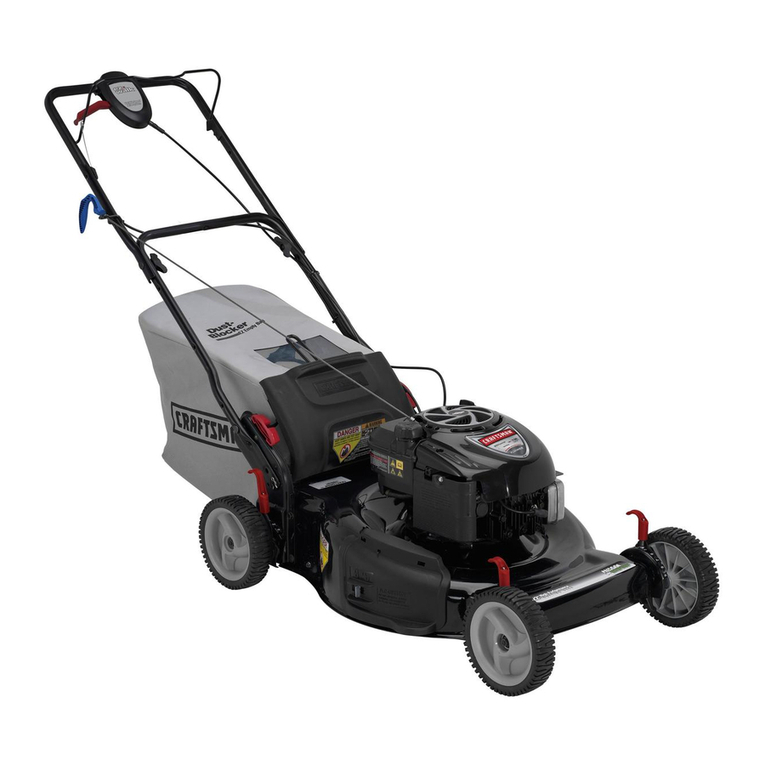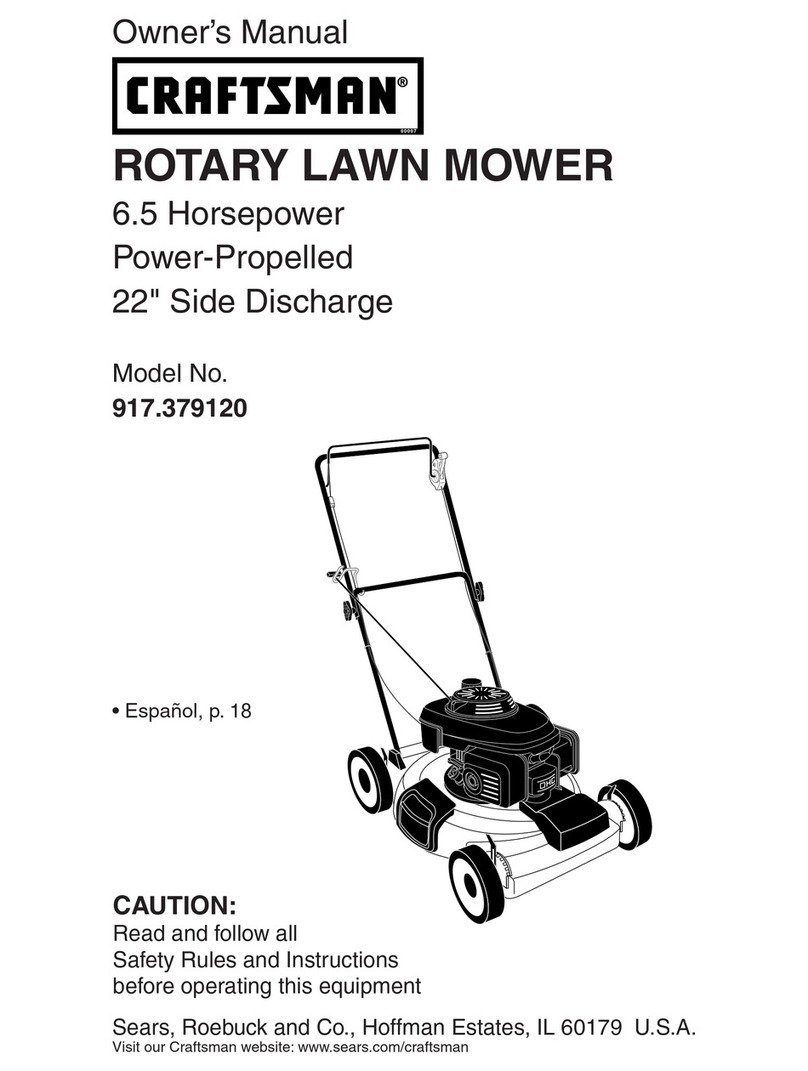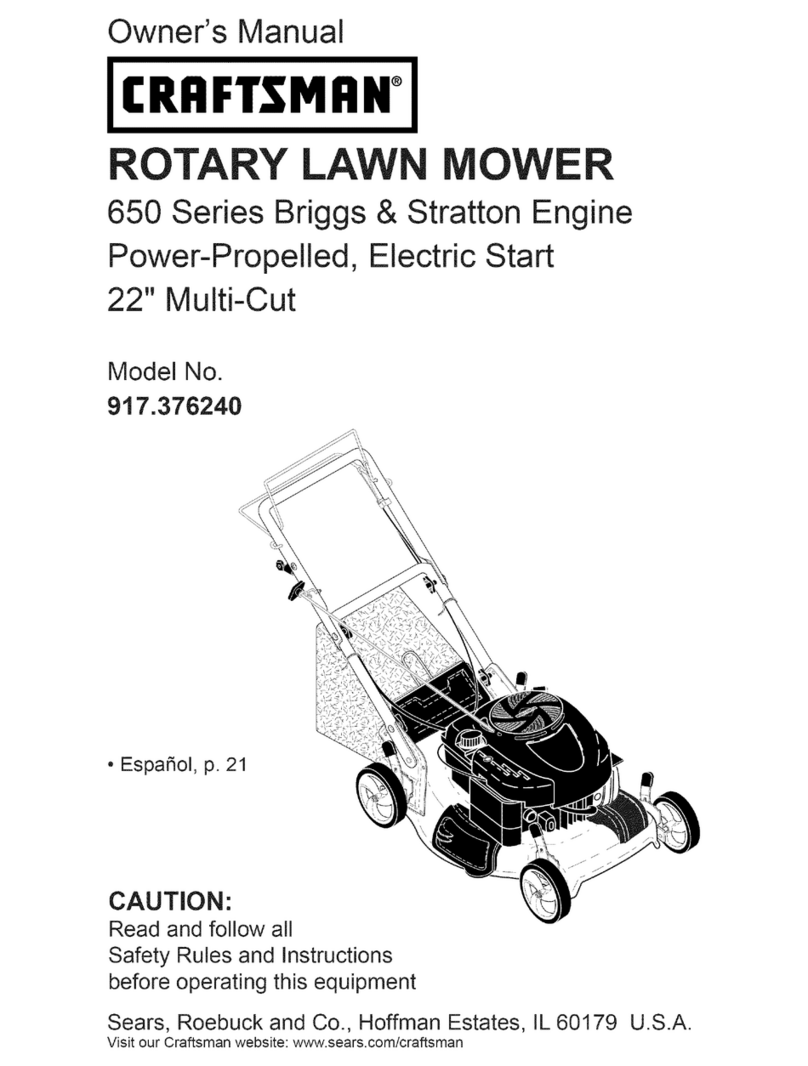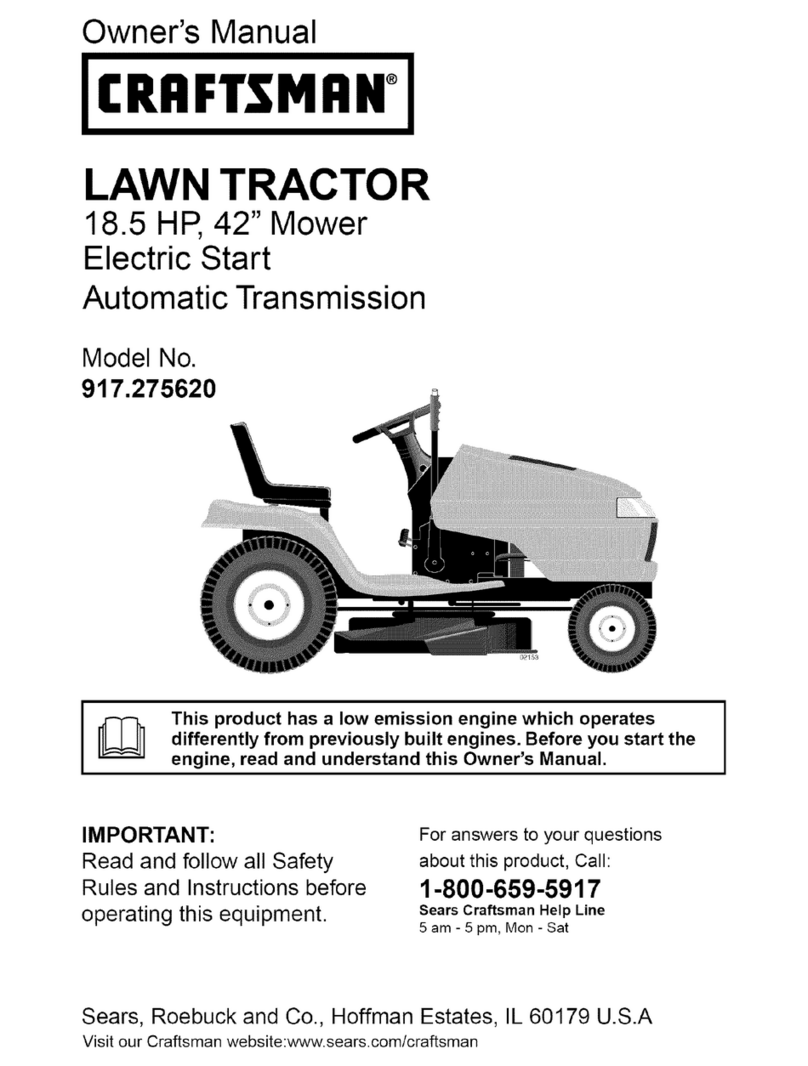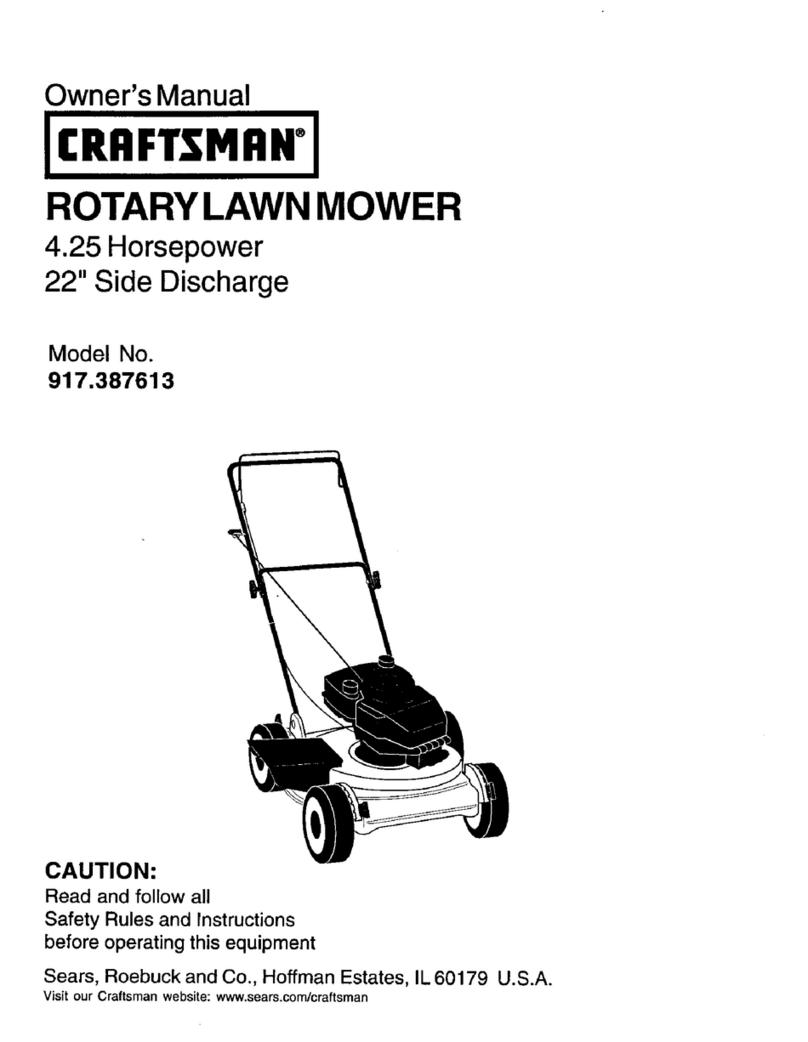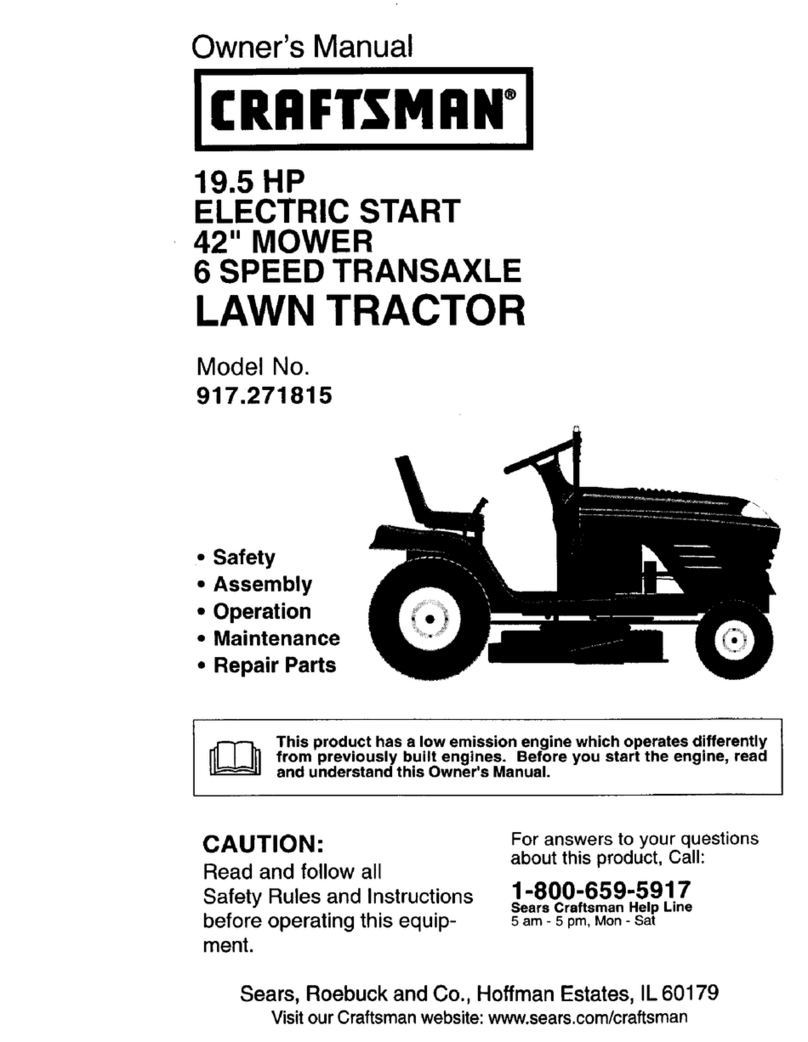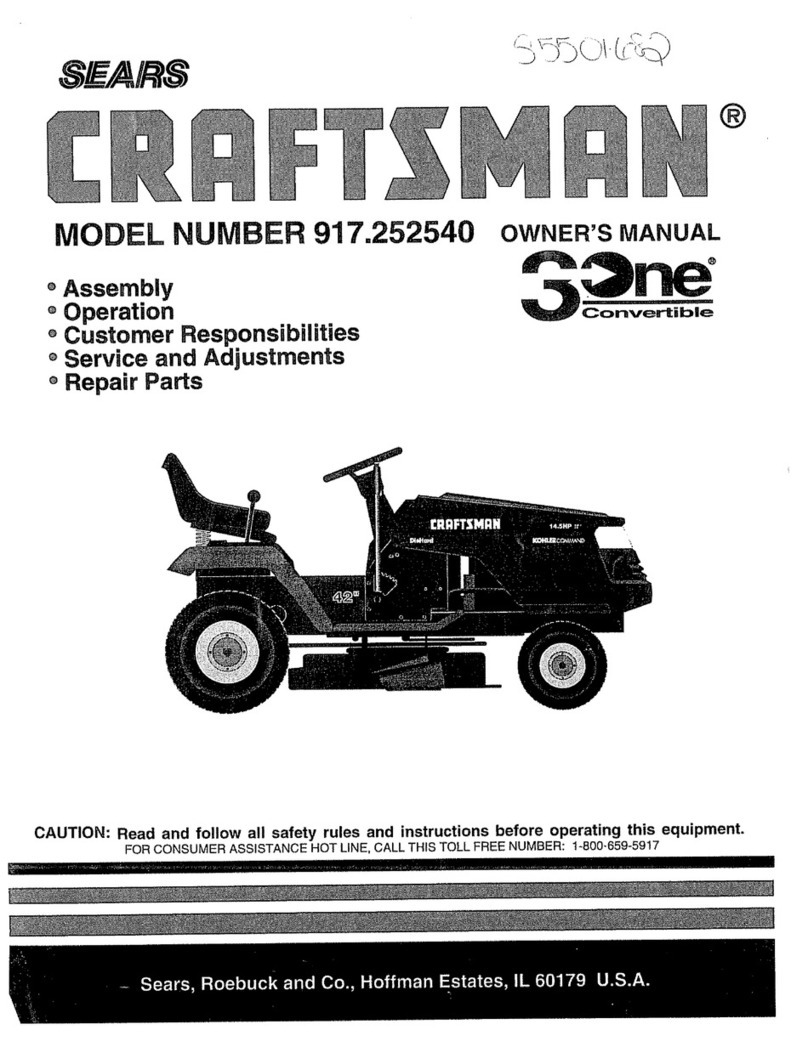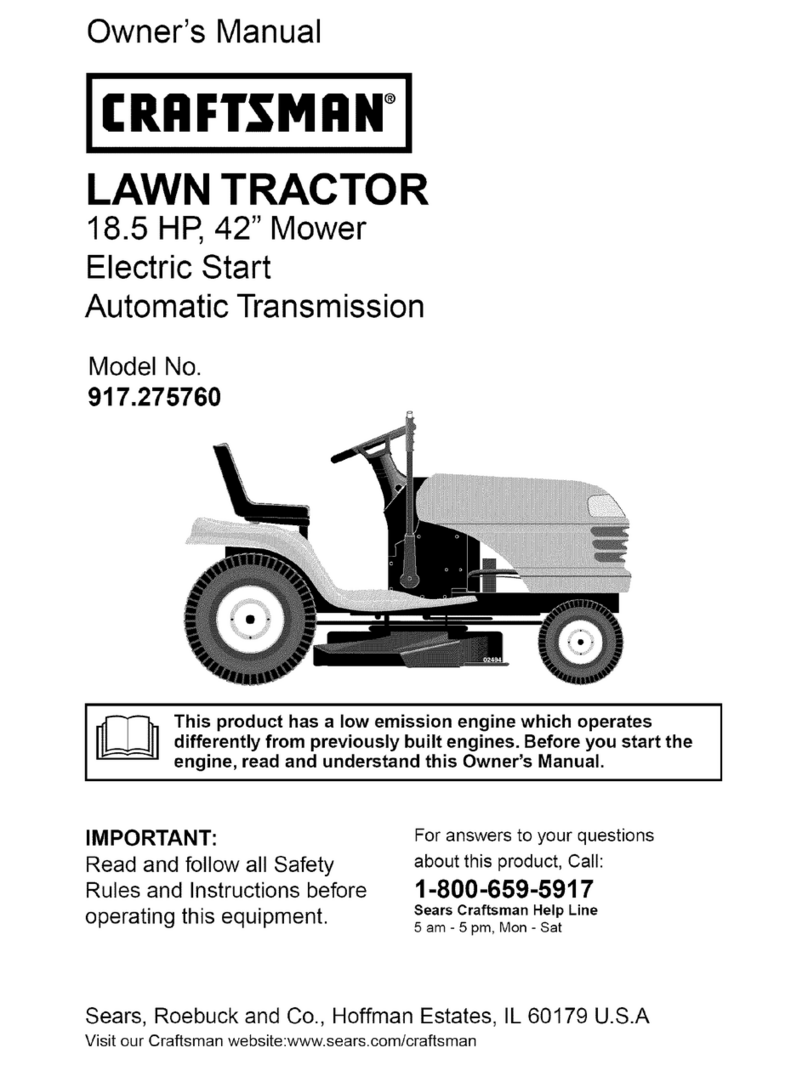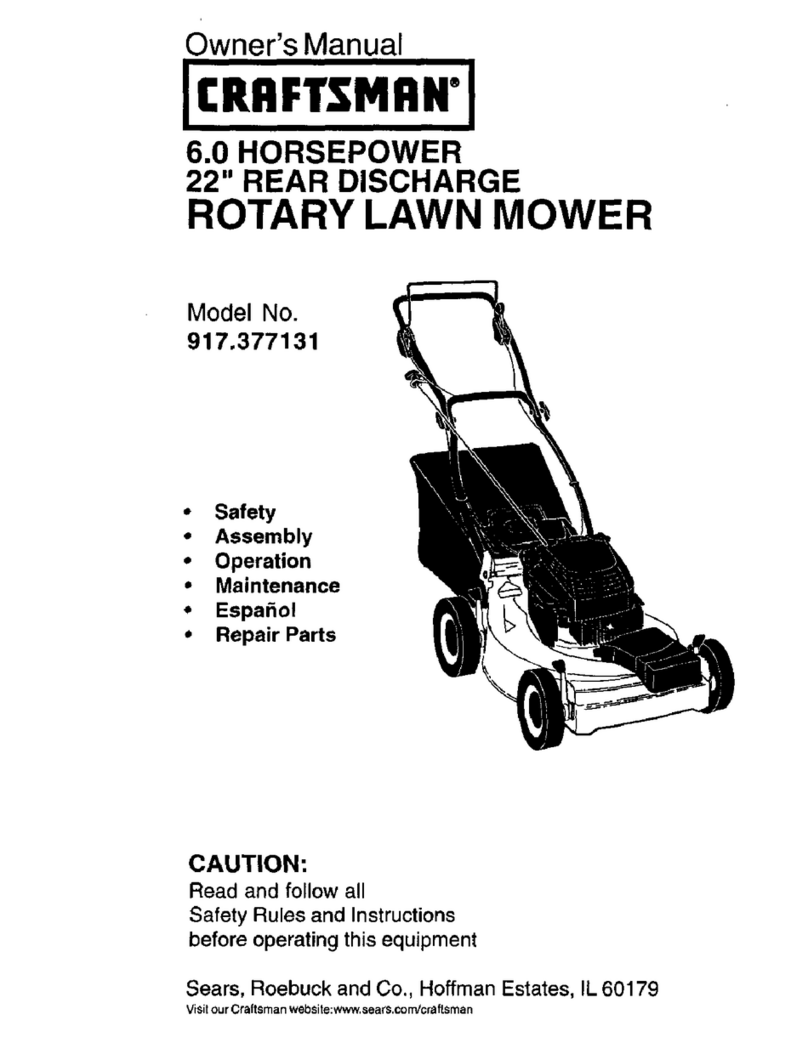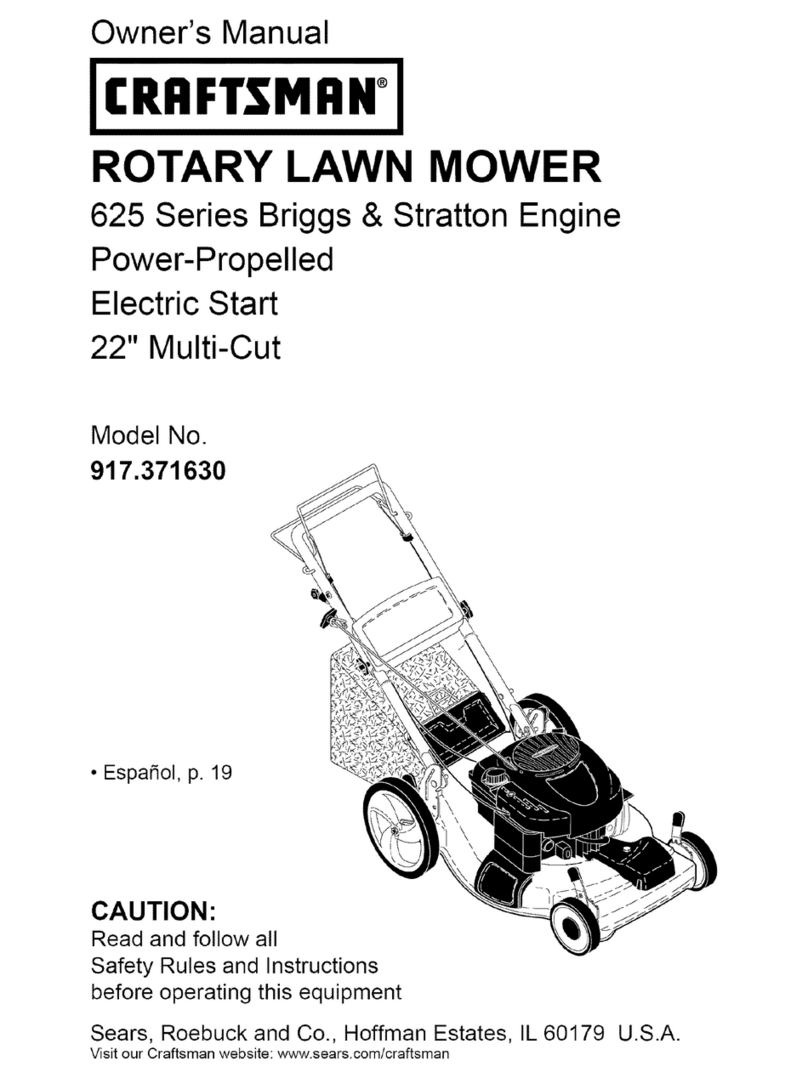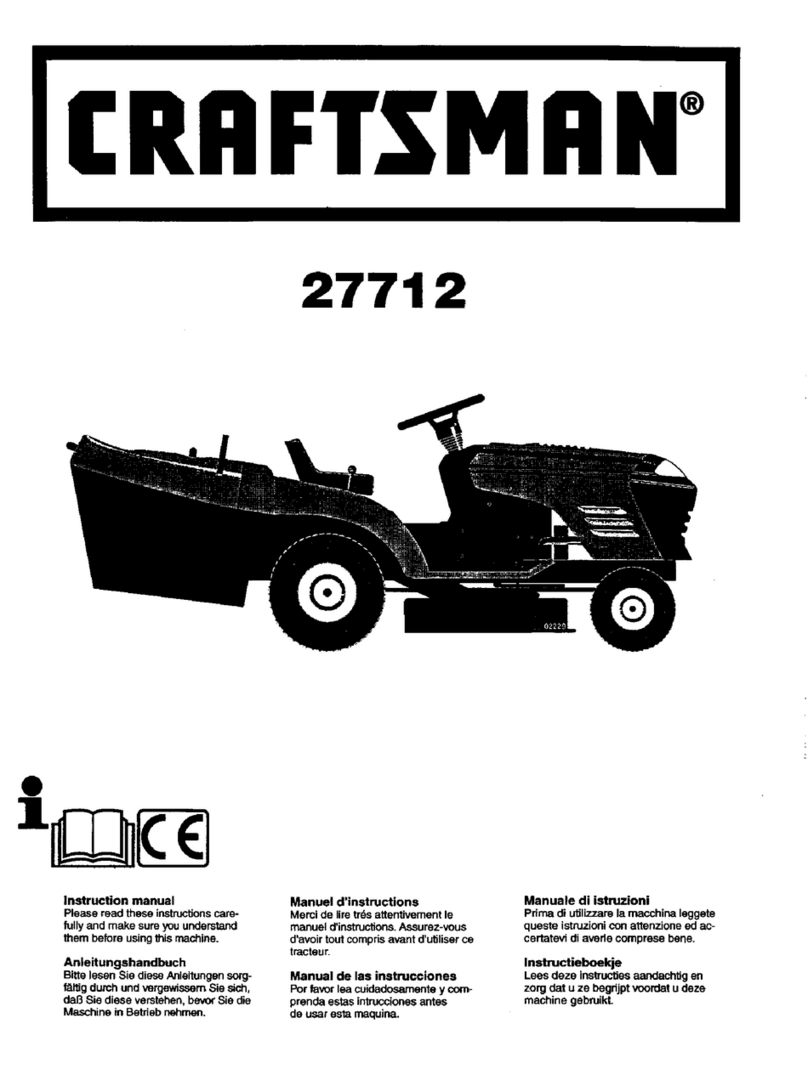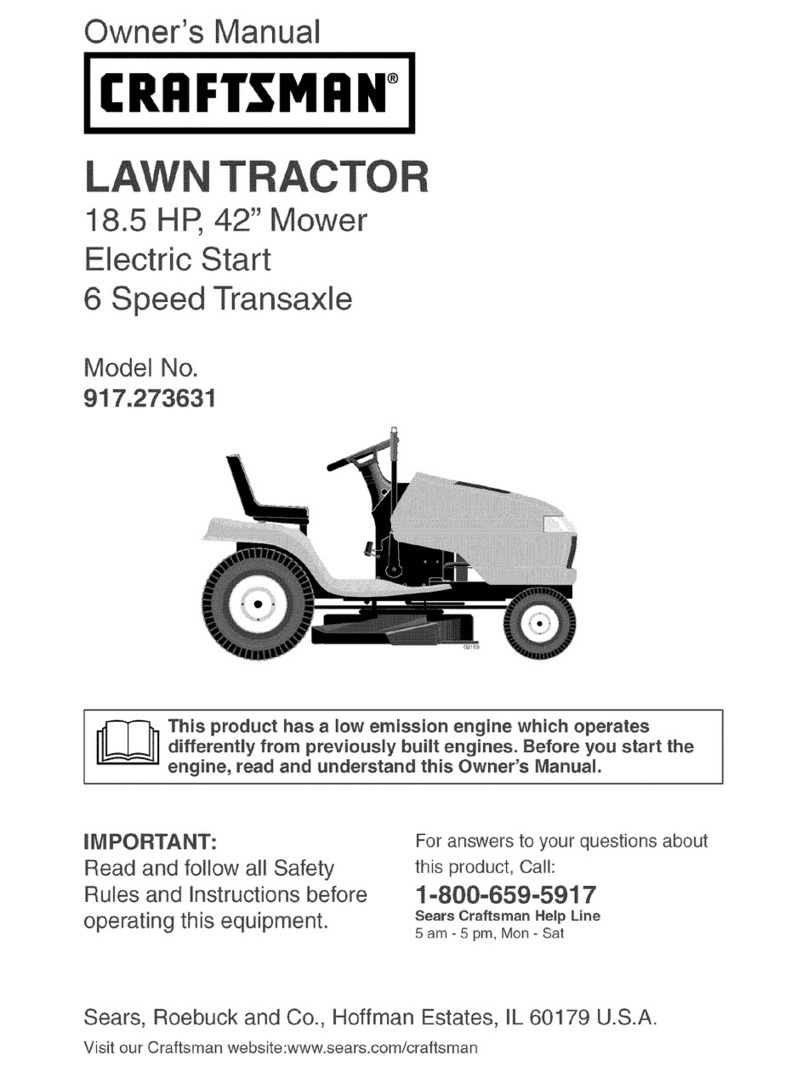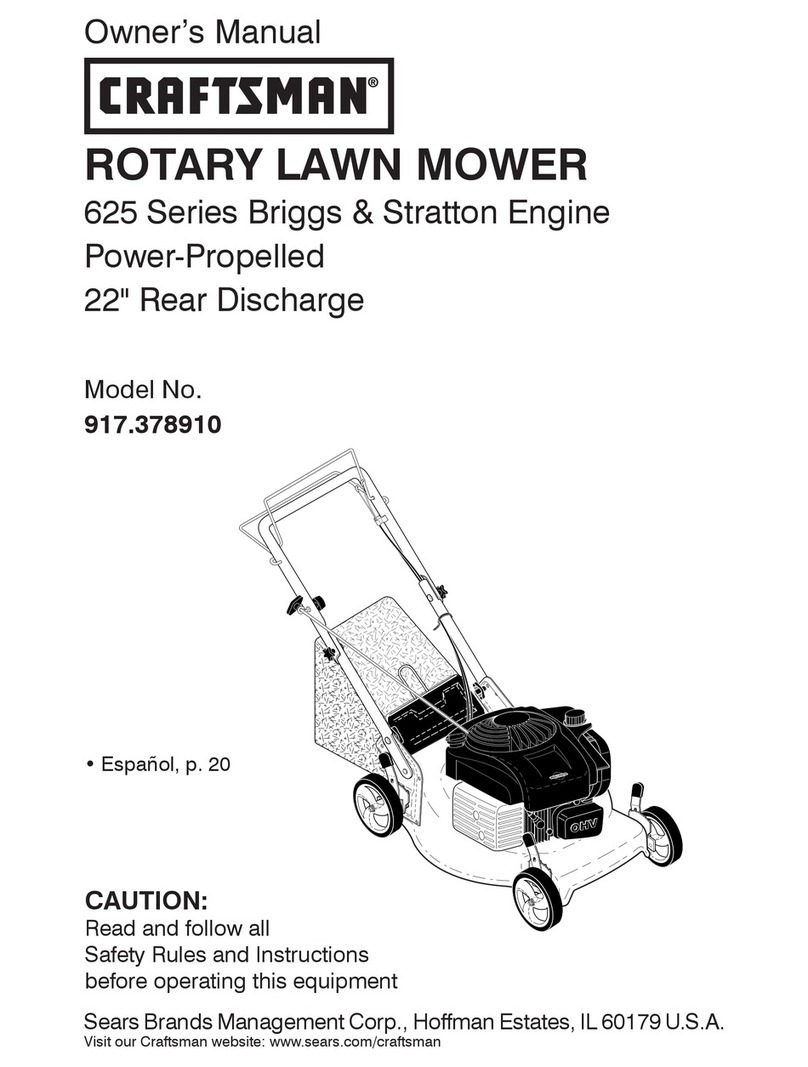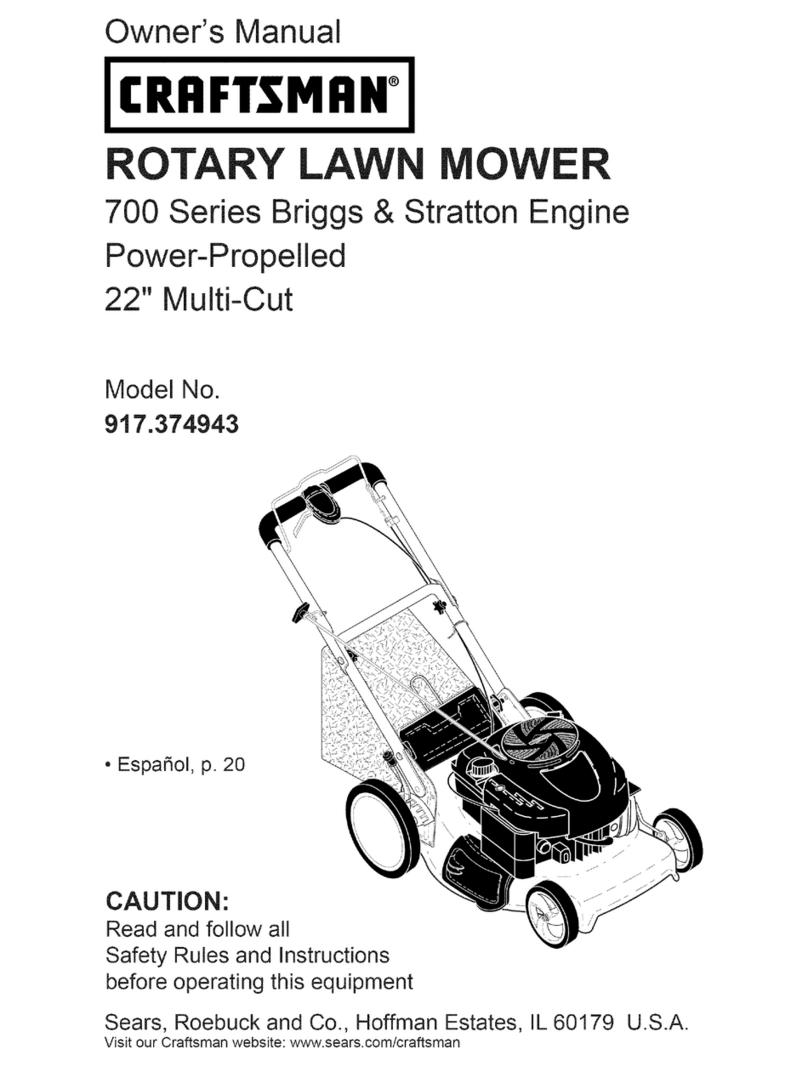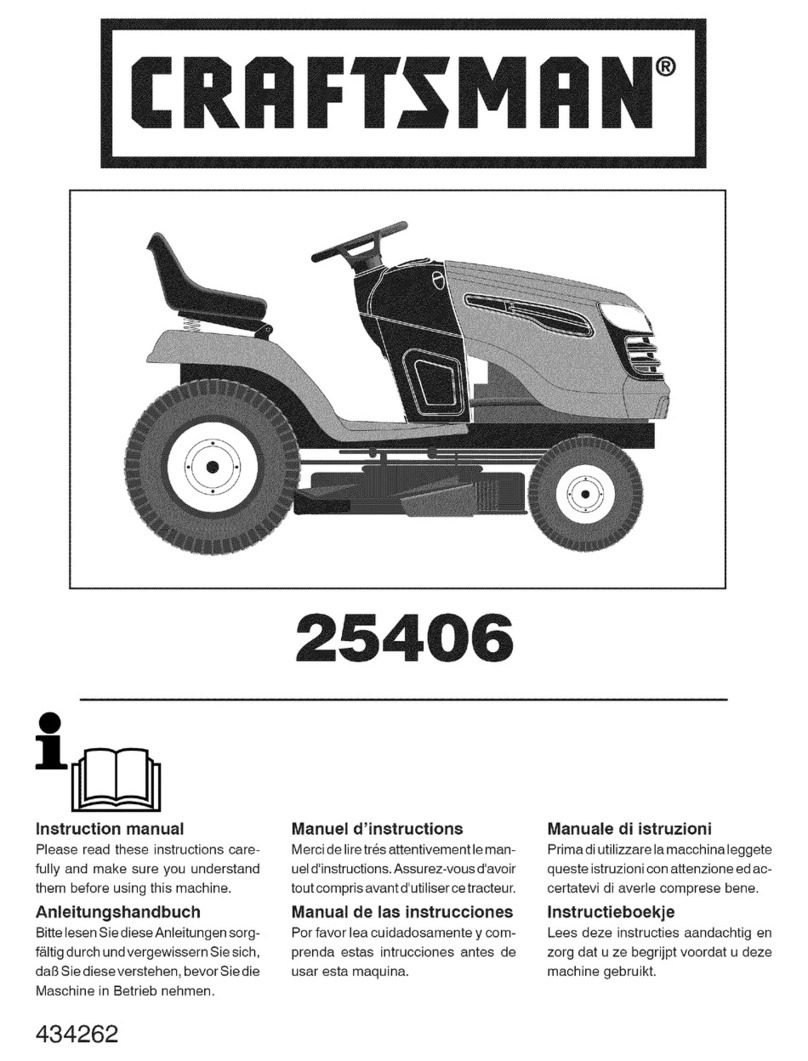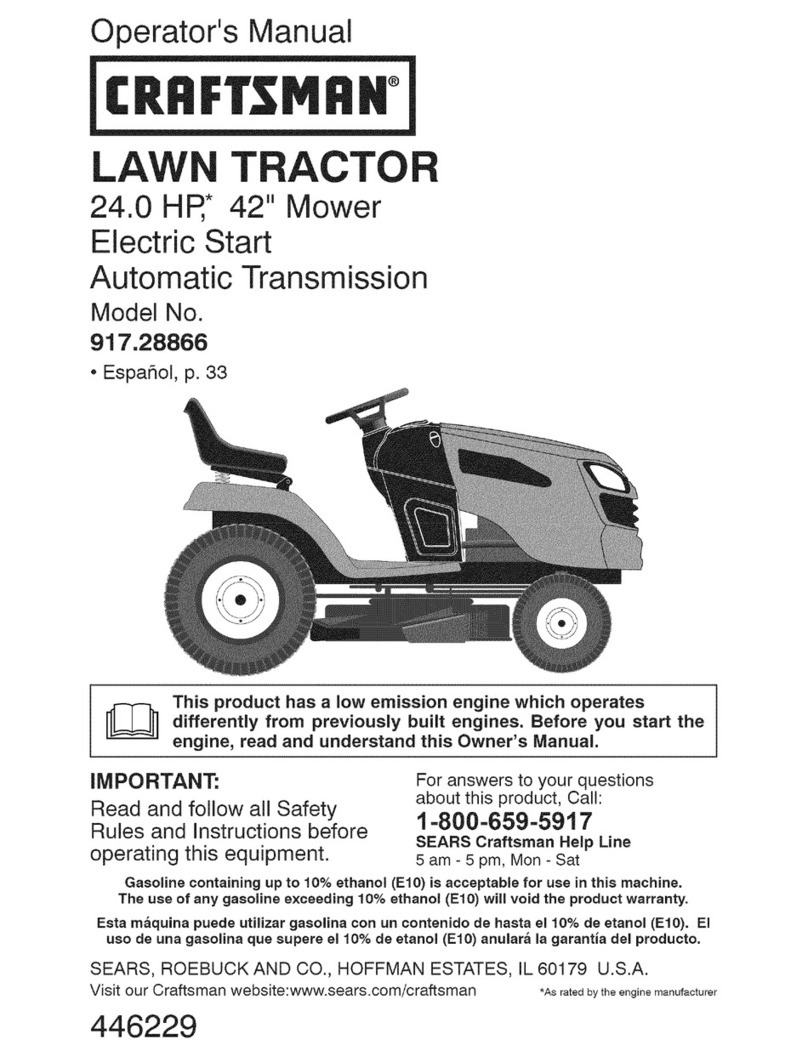MPORTAN'r: This cuttingmachine is capable of amputating hands and feet and
throwingobjects. Failure to observe the following safety instructionscould resut in
seriousinjury or death.
I.GENERAL OPERATION
•Read, understand,and follow all
instructionsin the manual and on the
machinebeforestarting.
• Only allow responsibleadults,who are
familiar withthe instructians,to operate
the machine.
• Clear the area of objectssuchas rocks,
toys,wire, etc., whichcould be picked
upand thrownby the blade.
• Be sure the area is clearof otherpeople
beforemowing, Stop machine if anyone
entersthe area.
•Never carry passengers.
•Do not mow in reverse unlessabsolutely
necessary. Always lookdown and
behind before and while backing.
•Be aware ofthe mower discharge
directionand do not point it at anyone,
Do notoperatethe mower without either
the entiregrass catcheror the guard in
place.
•Slowdown beforeturning.
• Never leave a runningmachine
unattended. Always turnoff blades,set
parkingbrake,stop engine, and remove
keys beforedismounting.
•Turnoff blades when not mowing.
•Stop engine before removing grass
catcheror uncloggingchute.
•Mow onlyin daylight or good artificial
light.
• Do not operate the machine while under
the influenceof alcoholor drugs.
•Watch for trafficwhen operatingnear or
crossingroadways.
•Use extra care when loading or unload-
ingthe machineintoa traileror truck.
•Data indicatesthatoperators, age 60
years and above, are involvedin a large
percentageof riding mower-related
injuries.These operatorsshould
evaluate their abilityto operate the riding
mowersafely enoughto protect them-
selves and othersfrom serious injury.
•Keepmachinefree of grass, leavesor
other debrisbuild-upwhich can touch
hotexhaust/engine parts and burn. Do
not allow the mower deck to plow leaves
or other debris whichcan cause build-
upto occur.Clean anyoil orfuel
spillagebefore operatingor storingthe
machine. Allow machine to cool before
storage.
II. SLOPE OPERATION
Slopesare a majorfactor related toloss-of-
controland tipoveraccidents,whichcan re-
suit in severe injury or death. All slopes
require extra caution. Ifyou cannotback up
the slope or if you feel uneasy on it, do not
mow it.
DO:
•Mow up and down slopes, not across.
• Remove obstacles such as rocks,tree
limbs, etc.
Watch for holes, ruts, or bumps. Uneven
terrain couldovedum the machine. Tall
grass can hide obstacles.
Use slow speed. Choose a low gear so
that you will not have to stop or shift
while on the slope.
Follow the manufacturer's recommenda-
tions for wheel weights or counter-
weights to improvestability.
Use extra care withgrass catchers or
other attachments. These can change
the stabiJityof the machine.
Keep all movement on the slopes slow
and gradual. Do not make sudden
changes in speed or direction.
Avoid starting or stopping on a slope, if
tires bosetraction, disengage the blades
and proceed slowly straight down the
slope.
DO NOT:
•Do not turn on slopes unless necessary,
and then, tam slowly and gradually
downhill, if possible.
•Do not mow near drep-offs, dftches, or
embankments. The mower could
suddenly tam over if a wheel is over the
edge of a cliff or ditch, or if an edge
caves in.
•Do not mow on wet grass. Reduced
traction couldcause sliding.
•Do not try tostabilize the machine by
putting your foot on the ground.
•Do notuse grasscatcheron steep
slopes.
3
